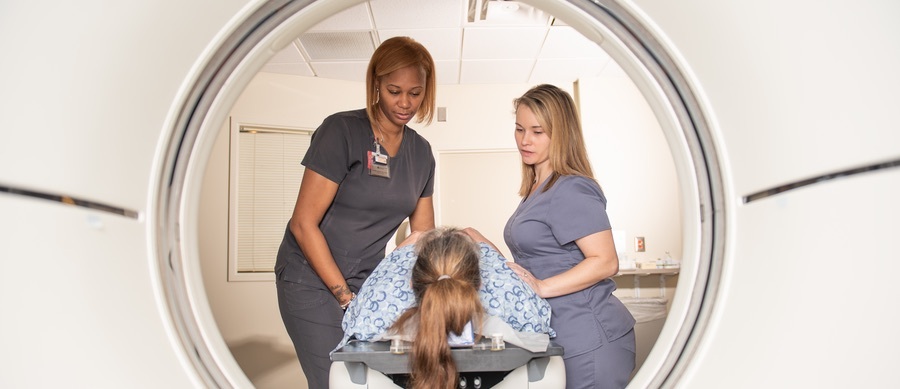
To plan the best treatment for ovarian cancer, your gynecologic oncologist needs to know the extent (stage) of the disease. The stage is based on whether the tumor has invaded nearby tissues or is being spread to other parts of the body, including through the lymph system. The grade of cancer, or likelihood of it growing quickly, will also be reviewed in the same process.
Staging is usually done after surgery and after several other tests are completed. Knowing the stage helps the doctor recommend the best kind of treatment and learn more about the patient’s prognosis (chance of recovery).
For ovarian cancer, your doctor will likely use the International Federation of Gynecology and Obstetrics (FIGO) staging system.
These are the stages of ovarian cancer:
Stage I: The cancer is only in the ovaries or fallopian tubes.
Stage IA: The cancer is only inside 1 ovary or fallopian tube. No cancer is found on the ovarian or fallopian tube surface or in the abdomen.
Stage IB: The cancer is found inside both ovaries or fallopian tubes, but it is not found on the ovarian or fallopian tube surface or in the peritoneal fluid or washings.
Stage IC: The cancer is in 1 or both ovaries or fallopian tubes, with any of the following:
Stage IC1: the capsule (outer covering) of the ovary ruptured (broke open) before or during surgery; or
Stage IC2: the tumor wall ruptures prior to surgery or there is cancer on the ovarian or fallopian tube surface; or
Stage IC3: cancer cells are found in the fluid of the peritoneal cavity (the body cavity that contains most of the organs in the abdomen) or in washings of the peritoneum (tissue lining the peritoneal cavity)
Stage II: The cancer involves 1 or both of the ovaries or fallopian tubes and has spread below the pelvis, or it is peritoneal cancer.
Stage IIA: The cancer has spread to other areas such as the uterus, fallopian tubes, and/or ovaries.
Stage IIB: The cancer cells have spread to organs in the peritoneal cavity (the space that contains the abdominal organs).
Stage III: The cancer involves 1 or both of the ovaries or fallopian tubes, or it is peritoneal cancer. It has spread to the peritoneum outside the pelvis and/or to lymph nodes in the retroperitoneum (lymph nodes along the major blood vessels, such as the aorta) behind the abdomen.
Stage IIIA1: The cancer has spread to the retroperitoneal lymph nodes (located at the back of the abdomen), but not to the peritoneal surfaces.
Stage IIIA(i): The spread is 10 millimeters (mm) or smaller.
Stage IIIA1(ii): The spread is larger than 10 mm.
Stage IIIA2: The cancer has spread microscopically from the pelvis to the abdomen and it may or may have not spread to the retroperitoneal lymph nodes.
Stage IIIB: The cancer has spread to the peritoneum outside the pelvis and the cancer in the peritoneum is no more than 2 centimeters. Cancer may have reached lymph nodes behind the peritoneum.
Stage IIIC: The cancer has spread to the peritoneum outside the pelvis and the cancer in the peritoneum is 2 centimeters or larger. Cancer may have also spread to regional lymph nodes, the liver, or the spleen.
Stage IV: The cancer has spread to fluid around the lungs.
Stage IVA: The cancer has spread to fluid around the lungs.
Stage IVB: The cancer has spread to the liver or spleen or to organs beyond the abdomen, including lymph nodes in the groin outside of the abdominal cavity.
Oncologists also describe ovarian cancer by their grade. The grade describes the comparison between cancer cells and healthy cells when viewed under a microscope. This comparison of cells helps the doctor predict how quickly the cancer may spread. It can also help your health care team make better decisions about your treatment plan.
Ovarian cancer grades are as follows:
Grade 1: The tissue is well differentiated. This means the cells look and are organized within the tumor like normal cells. These tumors tend to grow slowly.
Grade 2: The tissue is moderately differentiated. It shares features between well and poorly differentiated. Grade 2 is not commonly used.
Grade 3: The tissue is poorly differentiated or undifferentiated. This means that all or most cells appear very abnormal and do not have any normal tissue structure. These tumors usually grow fast and spread rapidly.
Quickly and efficiently build the materials you need to support your inbound marketing strategy. Drag and drop building blocks including testimonials, forms, calls-to-action, and more.